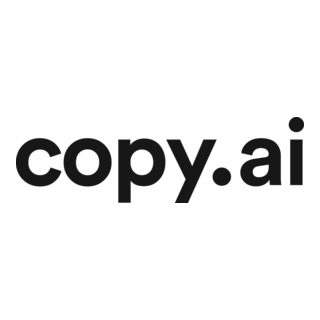
Copy.ai Workflow Platform: Complete Buyer's Guide
Transforms how go-to-market teams automate complex content workflows through AI-powered process orchestration that requires no coding expertise[38][42][70].
Copy.ai Workflow Platform enables organizations to codify their best practices into reusable, multi-step AI processes using natural language commands, distinguishing itself from single-task AI tools through comprehensive workflow automation capabilities.
Market Position & Maturity
Market Standing
Copy.ai demonstrates strong market momentum with reported 480% revenue growth in 2024[47][82] and a substantial user base of 17M+ users[84][86].
Company Maturity
The company's enterprise customer roster includes Siemens, ServiceNow, ThermoFisher, and Lenovo[84], indicating credible market penetration across technology, healthcare, and retail sectors.
Growth Trajectory
Growth trajectory shows expansion across multiple sectors with strongest adoption in technology, healthcare, and retail[84].
Industry Recognition
Industry recognition remains limited in available research, with competitive positioning based on workflow complexity rather than market awards or analyst recognition.
Strategic Partnerships
Strategic partnerships include integration ecosystem support through 2,000+ tools via Zapier and APIs[51][62].
Longevity Assessment
Copy.ai's workflow-centric approach and substantial enterprise-scale ROI potential support long-term viability.
Proof of Capabilities
Customer Evidence
Lenovo achieved $16M annual savings by automating agency-dependent workflows[47][82], while Best Western generated 480+ videos per year with 94% cost reduction[50].
Quantified Outcomes
Banzai's VP of Marketing saves 5 hours daily through campaign automation workflows, reducing content creation from half-day processes to minutes[69].
Case Study Analysis
Emerson's 40% AI-generated content adoption within 6 months using phased 'Lumen Days' co-creation strategy[54][70].
Market Validation
ROI breakeven at 4 months for marketing teams through content velocity gains[59][65].
Competitive Wins
Competitive wins include displacement of agency-dependent workflows, with Lenovo's $16M savings representing successful automation of previously outsourced content operations[47][82].
Reference Customers
Enterprise customers include Siemens, ServiceNow, ThermoFisher, and Lenovo[84].
AI Technology
Copy.ai's technical foundation centers on workflow orchestration through natural language processing, enabling non-technical users to create complex, multi-step AI processes without programming knowledge[38][42][70].
Architecture
Architecture and deployment leverage cloud-native infrastructure supporting 2,000+ integrations via Zapier and APIs[51][62].
Primary Competitors
Competing against both general-purpose AI writing tools (Jasper, Writesonic) and specialized workflow automation platforms (Zapier, Microsoft Power Automate).
Competitive Advantages
Primary competitive advantages include 2,000+ integrations via Zapier and APIs[51][62] and workflow complexity handling that exceeds single-task AI tools.
Market Positioning
Market positioning as 'GTM AI Platform'[47][86] represents marketing messaging rather than independently verified market leadership.
Win/Loss Scenarios
Win scenarios favor Copy.ai for organizations with established content processes requiring automation and scale.
Key Features

Pros & Cons
Use Cases
Integrations
Featured In Articles
Comprehensive analysis of AI Social Story Creators for AI Design for AI Design professionals. Expert evaluation of features, pricing, and implementation.
How We Researched This Guide
About This Guide: This comprehensive analysis is based on extensive competitive intelligence and real-world implementation data from leading AI vendors. StayModern updates this guide quarterly to reflect market developments and vendor performance changes.
136+ verified sources per analysis including official documentation, customer reviews, analyst reports, and industry publications.
- • Vendor documentation & whitepapers
- • Customer testimonials & case studies
- • Third-party analyst assessments
- • Industry benchmarking reports
Standardized assessment framework across 8 key dimensions for objective comparison.
- • Technology capabilities & architecture
- • Market position & customer evidence
- • Implementation experience & support
- • Pricing value & competitive position
Research is refreshed every 90 days to capture market changes and new vendor capabilities.
- • New product releases & features
- • Market positioning changes
- • Customer feedback integration
- • Competitive landscape shifts
Every claim is source-linked with direct citations to original materials for verification.
- • Clickable citation links
- • Original source attribution
- • Date stamps for currency
- • Quality score validation
Analysis follows systematic research protocols with consistent evaluation frameworks.
- • Standardized assessment criteria
- • Multi-source verification process
- • Consistent evaluation methodology
- • Quality assurance protocols
Buyer-focused analysis with transparent methodology and factual accuracy commitment.
- • Objective comparative analysis
- • Transparent research methodology
- • Factual accuracy commitment
- • Continuous quality improvement
Quality Commitment: If you find any inaccuracies in our analysis on this page, please contact us at research@staymodern.ai. We're committed to maintaining the highest standards of research integrity and will investigate and correct any issues promptly.